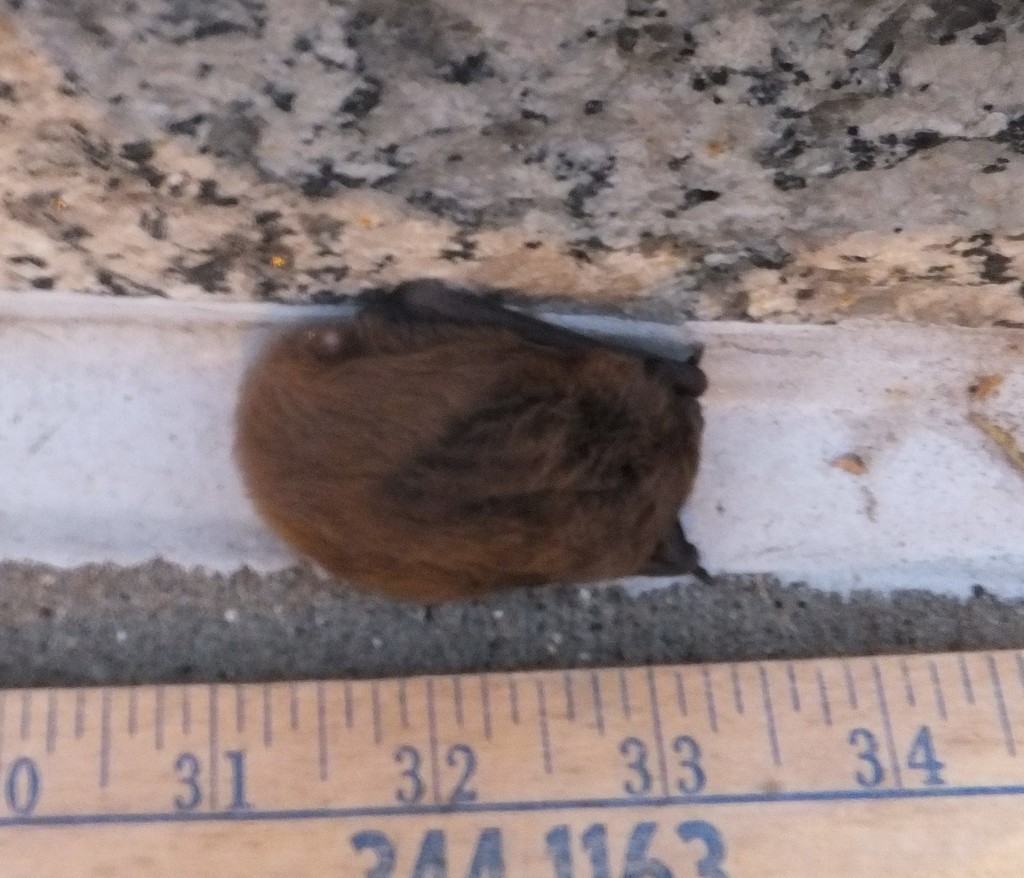Evening bat
A species of Evening bats Scientific name : Nycticeius humeralis Genus : Evening bats
Evening bat, A species of Evening bats
Botanical name: Nycticeius humeralis
Genus: Evening bats
Content
Description People often ask General Info
 Photo By redtail5 , used under CC-BY-NC-4.0 /Cropped and compressed from original
Photo By redtail5 , used under CC-BY-NC-4.0 /Cropped and compressed from original Description
A small and abundant bat, the evening bat rarely enters caves and is mostly found in urban environments. It is believed that the species migrates to the south, but it's known as a relatively slow flier. In many localities, it is considered threatened or endangered due to the fungal disease known as “white-nose syndrome.” It feeds on insects, particularly beetles, regulating insect populations.
Size
9 - 11 cm
Life Expectancy
2-5 years
Nest Placement
Cavity
Feeding Habits
Evening bat primarily consumes beetles, such as spotted cucumber beetles, which account for nearly a quarter of their diet in some regions, alongside ground and scarab beetles. Moths, bugs, winged ants, and flies are also included in their varied diet, reflecting adaptive foraging behaviors.
Habitat
forest, river corridors, wetlands
Dite type
Insectivorous
People often ask
General Info
Feeding Habits
Bird food type
Behavior
Evening bat is a nocturnal species, chiefly known for its feeding behavior. Like other bats, it uses echolocation to find and capture insects during flight, mainly in forested habitats. Evening bat is a largely solitary creature, but socializes during roosting periods in maternity colonies. Unlike many bats species, evening bat does not exhibit migratory behavior.
Distribution Area
At first, the evening bat was thought of as a southeastern bat species. However, breeding evening bats have been found as far north as Michigan and as far west as the 100th meridian. 
Species Status
While the evening bat is considered endangered in the state of Indiana, it has a cosmopolitan distribution throughout the southeast and midwest. Because evening bats do not enter or hibernate in caves, the species is not at-risk from white-nose syndrome. The evening bat's avoidance of this disease, along with die-offs of many other species, is possibly responsible for the evening bat recently expanding its range into Wisconsin in 2015 and Minnesota in 2016. 
Scientific Classification
Phylum
Chordates Class
Mammals Order
Bats Family
Evening birds Genus
Evening bats Species
Evening bat